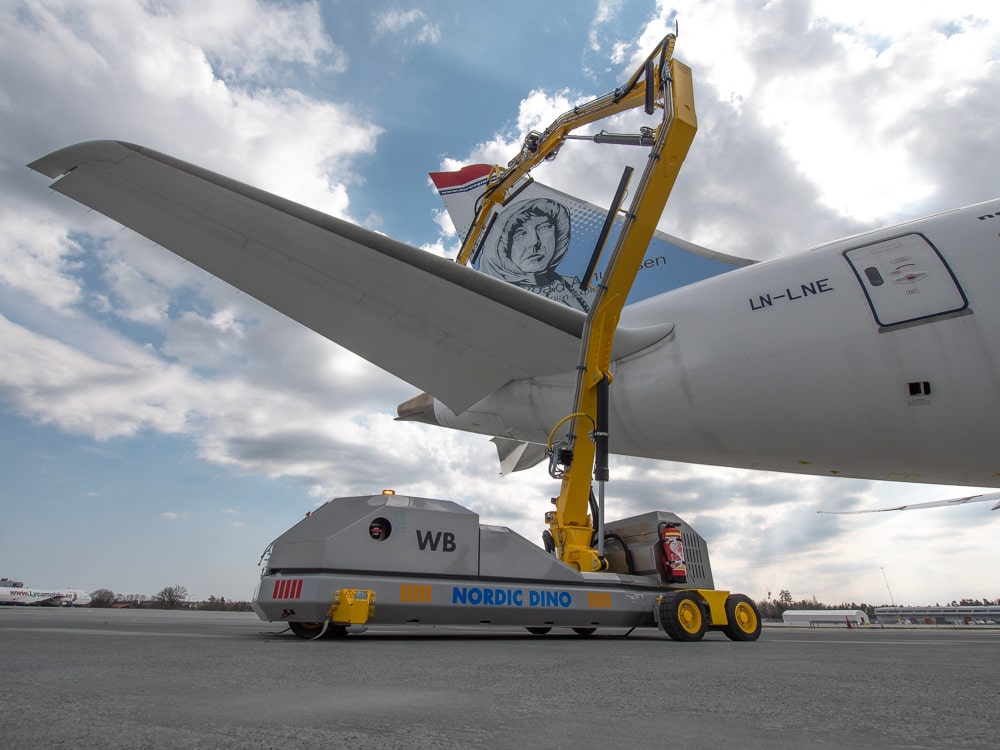 Process automatization in aviation is seen as the next logical step for the industry’s development, including markets like aircraft exterior cleaning. There is a number of professionals that view a fully automated exterior cleaning solution as the future of aircraft exterior cleaning, but the airlines and maintenance, repair, and overhaul (MRO) service providers are seeking something more in between.
Process automatization in aviation is seen as the next logical step for the industry’s development, including markets like aircraft exterior cleaning. There is a number of professionals that view a fully automated exterior cleaning solution as the future of aircraft exterior cleaning, but the airlines and maintenance, repair, and overhaul (MRO) service providers are seeking something more in between.
With a significant automatization wave, the aviation industry is, too, looking at exchanging its less sustainable practices for more eco-friendly ones. Aircraft exterior cleaning, an integral part of MRO services, has been on a path of automatization as well, but Jan Brunstedt, CEO of Aviator Robotics AB and the creator of Nordic Dino, the leading aircraft exterior cleaning robot, observes that the need in the market is actually more of a happy medium.
“It’s quite an interesting position that the market is in right now. On one hand, the traditional washing method, which includes a sizeable team of people, equipment, and time, has been introducing issues that airlines and MRO providers want to avoid, particularly human errors which can damage an aircraft. On the other hand, they are doubtful about fully-automated exterior cleaning machinery as well – the fact that it’s not controlled by a professional eye just doesn’t sit right either.”
However, this predicament leads to a golden middle that more MROs are looking into acquiring, notes Brundstedt. Semi-automatic washing robots for aircraft exterior cleaning seem to be the needed answer for the market demand. According to him, the safety aspect of a semi-automatic washing solution is the prime reason for many. While it takes a crew of 10-15 people, and lots of specialized equipment to wash a mid-sized aircraft and on top of that fit into a particular timeframe, semi-automatic robots do it with less effort and dange0r, but still with a care of a trained professional.
“Managing a crew this large to do a job like this both quickly and to a high standard is a really tough job,” explains Brundstedt. “One slight oversight can lead to multiple things – injured crew members, human errors, damaged equipment or aircraft’s exterior. There are a number of things that can go wrong. Fully-automatic options – which are still not quite available yet – have the potential to cause similar troubles. And that leads to that happy middle MROs are looking for – semi-automatic solutions that do a quality job with speed and precision, and still have trained professional’s input.”
Brundstedt adds that nowadays, it has become more important to have the exterior of an aircraft washed, and aircraft manufacturers – Boeing and Airbus – understand that, too.
“There has been a noticeable shift from the manufacturers’ side a well – stricter requirements to carriers, and more inspections taking place when it comes to maintaining aircraft exterior. It now is becoming part of the warranty itself; not just individual rules airlines adopt themselves. There’s more pressure coming from the manufacturers, and that means more frequent washing schedules for airlines, which leads to adopting more efficient methods.”
Going fully automatic does not necessarily mean the best solution, and that could be true when it comes to aircraft exterior cleaning. While companies are looking into developing such washing methods, albeit pricy, the market – carriers, and MROs – are reluctant to go full-automatic and instead are zeroing in on alternatives, like semi-automatic exterior cleaning methods.





